Japan stocks soar to record highs, yen slumps after Takaichi wins LDP election
Comcast Corporation (NASDAQ:CMCSA) shares jumped nearly 5% in premarket trading after the company presented its second-quarter 2025 results on July 31, showing modest overall growth driven by strong performance in its Content & Experiences segment, particularly theme parks.
Quarterly Performance Highlights
Comcast reported consolidated revenue of $30.3 billion for Q2 2025, representing a 2.1% increase compared to the same period last year. Adjusted EBITDA rose 1.1% to $10.3 billion, while adjusted earnings per share grew 3.3% to $1.25. The company generated $4.5 billion in free cash flow during the quarter.
As shown in the following consolidated financial results:
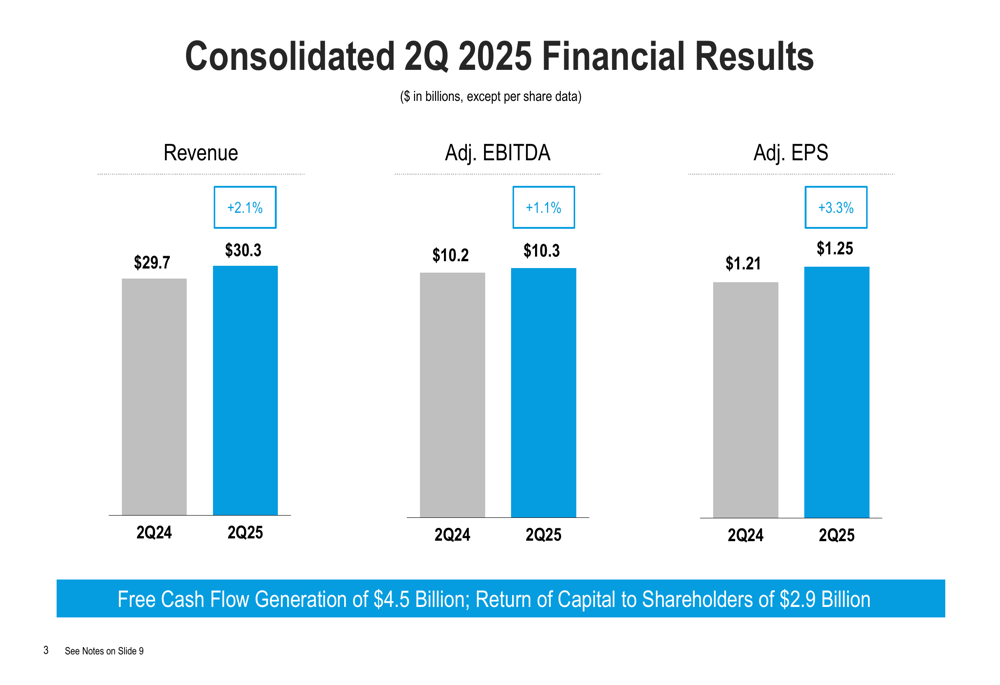
These results mark an improvement from Q1 2025, when the company reported revenue of $29.89 billion. The stock’s positive reaction contrasts with the previous quarter, when shares fell despite an earnings beat, reflecting investor concerns about broadband subscriber losses.
Segment Analysis: Content & Experiences
The Content & Experiences segment emerged as Comcast’s growth engine in Q2, with revenue increasing 5.6% year-over-year to $10.6 billion and adjusted EBITDA rising 3.6% to $2.0 billion. Theme Parks were the standout performer within this segment, with revenue surging 18.9% to $2.35 billion.
The segment’s performance breakdown is illustrated here:

A major highlight for the quarter was the May 2025 opening of Universal Epic Universe, the company’s highly-anticipated theme park in Orlando and the first major theme park to open in the area in 25 years. The company also noted expansion of its Universal Horror Unleashed concept with a Las Vegas destination opening in August and a Chicago location planned.
The opening of Epic Universe represents a significant milestone for Comcast’s theme park business:

On the content side, the company highlighted the successful box office performance of "How To Train Your Dragon," a live-action reimagining from Universal Pictures and DreamWorks Animation that dominated the global box office during its opening weekend in June.
The film’s success is visualized here:

The Media subsegment, which includes the Peacock streaming service, delivered more modest growth with revenue up 1.8% to $6.44 billion, though its adjusted EBITDA increased by a more substantial 9.3%. Meanwhile, Studios revenue grew 8.0% to $2.43 billion, but adjusted EBITDA declined 31.0% to $85 million.
Segment Analysis: Connectivity & Platforms
Comcast’s Connectivity & Platforms segment, which includes broadband, video, and wireless services, showed relatively flat performance with revenue of $20.4 billion, down 0.4% year-over-year, and adjusted EBITDA of $8.5 billion, up just 0.1%.
The segment’s performance is detailed here:
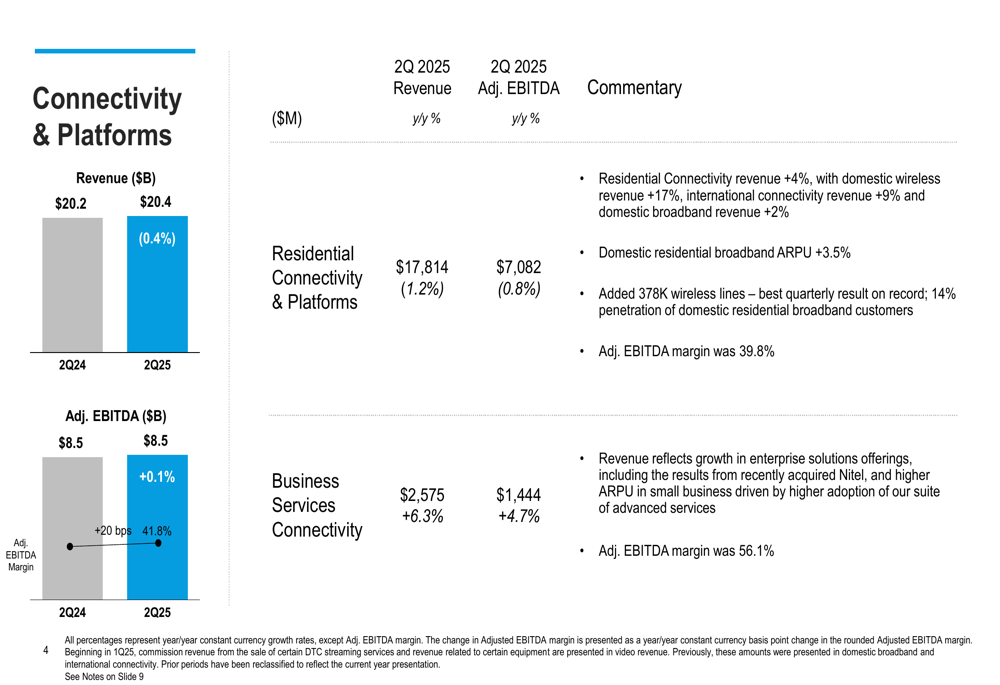
While the company didn’t explicitly disclose broadband subscriber numbers (a metric that showed concerning losses of 199,000 in Q1), it highlighted the addition of 378,000 wireless lines during the quarter. Comcast also reported domestic residential broadband ARPU (average revenue per user) growth of 3.5%, suggesting pricing power despite competitive pressures.
In June 2025, Xfinity launched a new nationwide pricing structure for internet packages that includes unlimited data and an advanced WiFi gateway. Additionally, in April, the company introduced new Premium Unlimited mobile plans with enhanced features like 4K UHD streaming and extra WiFi hotspot data.
Capital Allocation & Shareholder Returns
Comcast maintained its focus on shareholder returns, delivering $2.9 billion to shareholders in Q2 through a combination of share repurchases ($1.7 billion) and dividends ($1.2 billion). Over the past 12 months, the company has returned a total of $12.6 billion to shareholders, reducing total shares outstanding by 5% year-over-year.
The company’s capital allocation strategy is outlined here:
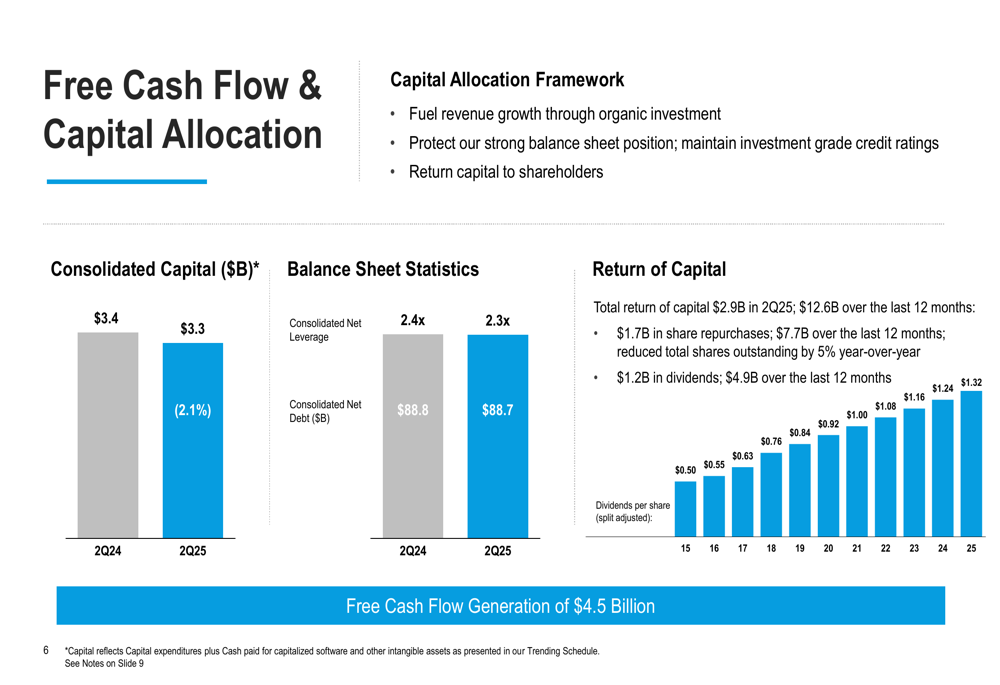
Comcast’s consolidated net leverage ratio improved slightly to 2.3x in Q2 2025 from 2.4x in the same period last year, while consolidated net debt remained relatively stable at $88.7 billion compared to $88.8 billion a year ago.
The path from adjusted EBITDA to free cash flow is illustrated in this breakdown:
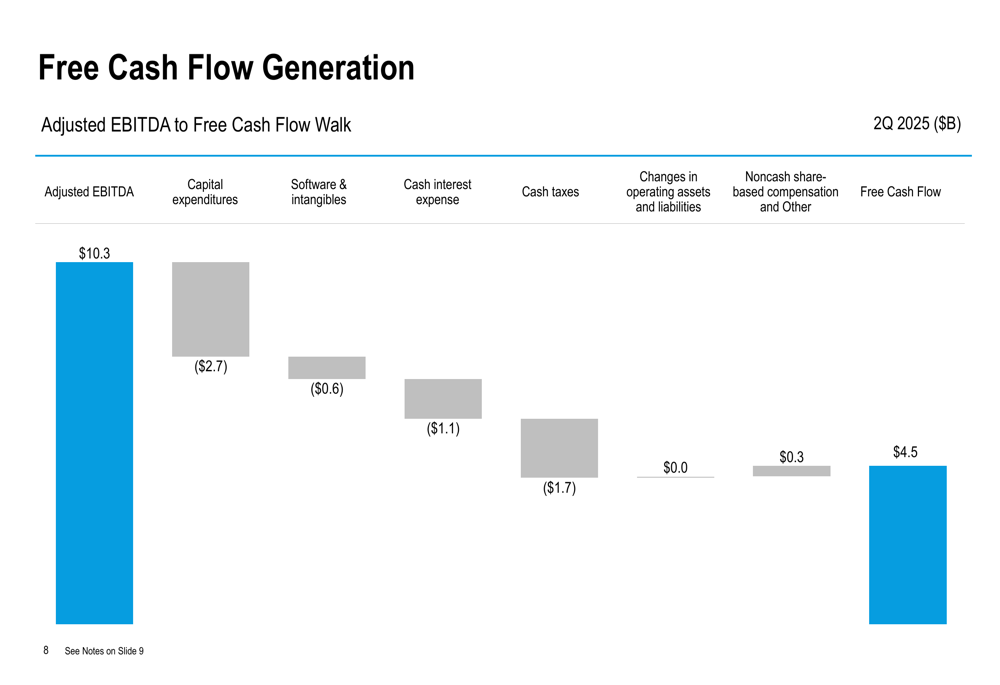
Forward Outlook
While Comcast didn’t provide specific forward guidance in the presentation, the company’s capital allocation framework emphasizes three priorities: fueling revenue growth through organic investment, maintaining a strong balance sheet with investment-grade credit ratings, and returning capital to shareholders.
The company’s recognition as one of TIME’s Most Influential Companies of 2025 in June highlights its continued impact in the media and telecommunications landscape:
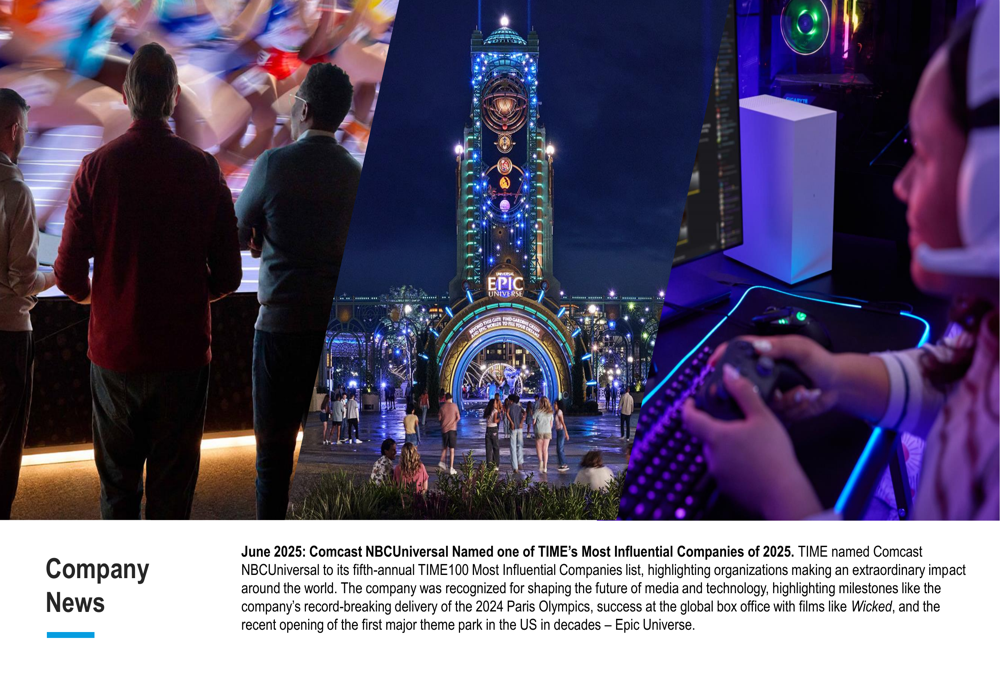
With the successful launch of Epic Universe, continued momentum in wireless subscriber additions, and strong content performance, Comcast appears positioned to navigate the competitive challenges in its core connectivity business while leveraging growth opportunities in its content and experiences portfolio.
The stock’s premarket rally to $34.09 suggests investors are responding positively to the results, though shares remain well below their 52-week high of $45.31, indicating potential upside if the company can sustain its growth trajectory and address competitive pressures in its broadband business.
Full presentation:
This article was generated with the support of AI and reviewed by an editor. For more information see our T&C.
